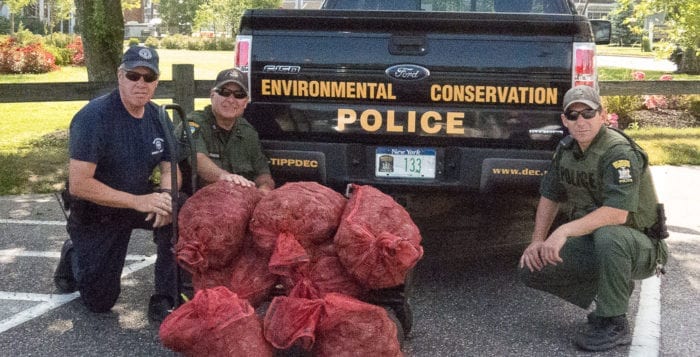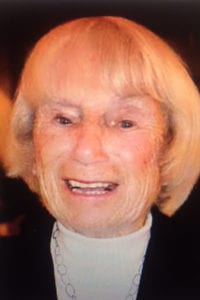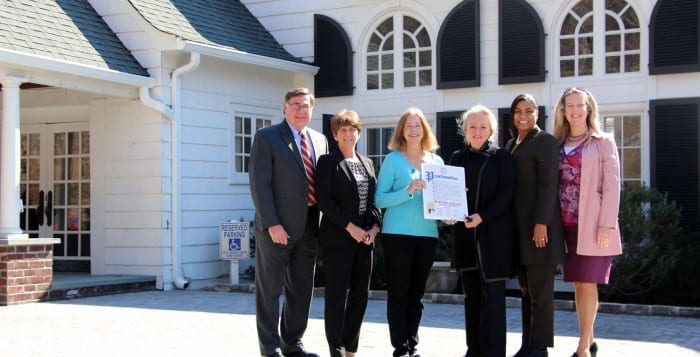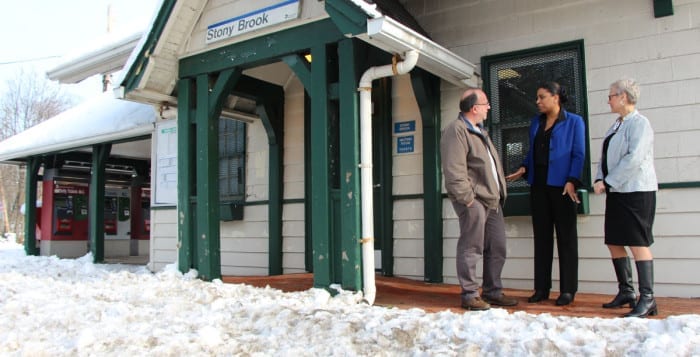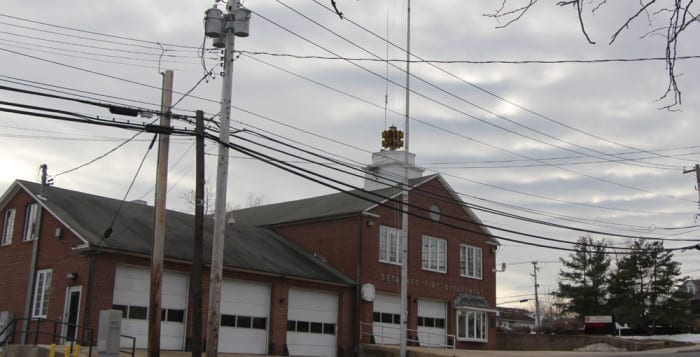By Rebecca Anzel
Brookhaven is laying the groundwork to make its beaches more accessible to residents.
Town Supervisor Ed Romaine (R) and Councilwoman Jane Bonner (C-Rocky Point) announced new sand surfacing mats, called Mobi-Mats, at Cedar Beach West in Mount Sinai and West Meadow Beach in Stony Brook.
“The mats open up opportunities that didn’t exist before for people that, whatever the reason, the sand was not easy to navigate,” Bonner said. “So often times they wouldn’t go to the beach.”
The nonslip, semi-rigid roll-up beach access mats, completely made from recycled polyester roll by New Jersey company Deschamps Mats Systems Inc., enable residents who are elderly or using wheelchairs, crutches, strollers or other mobility devices to more easily traverse sandy beaches. They are low maintenance — the tear-resistant, permeable structure allows sand to filter through — and are easily maintained by removing any excess sand buildup with a broom or leaf blower. Mobi-Mats have already been used at beaches in Nassau County, including Jones Beach, and by the Marine Corps for the past 20 years in vehicular beach landing operations.
Accomplishing this project was easy, Bonner said. She saw a picture of the Mobi-Mats online over the winter and showed it to Parks Commissioner Ed Morris, who ordered them. “Everything in government should be that simple,” she said.
Rocky Point resident Aisha Grundmann said the mats are “wonderful” and installing them was “a great idea.” Her son Alex, 11, uses a wheelchair and asks to go to Cedar Beach more frequently now that he knows the mats make it easier for him to navigate across the sand.
“Multiple people have asked Alex for a beach playdate now, where they otherwise maybe wouldn’t have,” she said. “I can’t think of a more accepting community.”
Alex, who is going into fifth grade, is a local advocate for greater mobility not just for wheelchairs, but for everyone. He influenced improvements to the playgrounds and restrooms at his school to make them more handicap-accessible.
“The feedback for this project has been some of the most positive feedback I’ve ever received since I’ve been in office,” Bonner said.
Cedar Beach West and West Meadow Beach are just the first of Brookhaven’s beaches to get the mats. According to a town spokesman, Brookhaven purchased three — and there are plans to expand the program.
“They will be placed at some point at all of our beaches to allow people with disabilities or physical limitations to also enjoy the beach — one of the great pastimes on Long Island,” Romaine said. “We think this has a large impact on people’s lives.”
He added that for wheelchair-bound Brookhaven residents, beaches also have “beach-ready” chairs with larger wheels available upon request from the lifeguards.
Mobi-Mats are available for use between Memorial Day and Labor Day.


